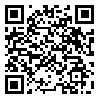Volume 72, Issue 1 (April 2014)
Tehran Univ Med J 2014, 72(1): 7-14 |
Back to browse issues page
Download citation:
BibTeX | RIS | EndNote | Medlars | ProCite | Reference Manager | RefWorks
Send citation to:



BibTeX | RIS | EndNote | Medlars | ProCite | Reference Manager | RefWorks
Send citation to:
Jafari A R, Shafiee A A, Mirzajani A, Jamali P. CAM visual stimulation with conventional method of occlusion treatment in amblyopia: a randomized clinical trial. Tehran Univ Med J 2014; 72 (1) :7-14
URL: http://tumj.tums.ac.ir/article-1-5916-en.html
URL: http://tumj.tums.ac.ir/article-1-5916-en.html
1- Research Center of Basir Eye Clinic, Tehran, Iran.
2- Private Practice, Shafiee Optometry Clinic, Tehran, Iran.
3- Department of Optometry, Rehabilitation Research Center, Rehab. School, Iran University of Medical Sciences, Tehran, Iran. ,mirzajani.a@Iums.ac.ir
4- Shahrood Welfare Organization, Prevention Department, Shahrood, Iran.
2- Private Practice, Shafiee Optometry Clinic, Tehran, Iran.
3- Department of Optometry, Rehabilitation Research Center, Rehab. School, Iran University of Medical Sciences, Tehran, Iran. ,
4- Shahrood Welfare Organization, Prevention Department, Shahrood, Iran.
Abstract: (6046 Views)
Background: The application of CAM visual stimulation returns to the date of more than fifty years ago. However, the reports of previous studies in this field vary from no effect to significant effects of this method in amblyopia treatment. The purpose of this study was to determine the effect of CAM visual stimulation along with conventional occlusion therapy in anisometropic amblyopic children.
Methods: Forty amblyopic children aged 4 to 6 years old with no previous treatment were enrolled in this randomized clinical trial study. The subjects were randomly as-signed in two different groups. The group 1 included conventional occlusion therapy and group 2 includes occlusion therapy with complementary CAM visual stimulation. In terms of visual acuity and stereopsis improvement and reduction of amblyopia sever-ity, two groups were compared using the repeated measure ANOVA and LSD Post Hoc tests.
Results: In group 1 including conventional occlusion therapy, visual acuity improved from 0.444±0.077 logMAR to 0.138±0.023 logMAR, i.e., improvement of 0.306 log-MAR (P< 0.001) whereas in group 2 including complementary CAM usage, visual acu-ity improved from 0.398±0.075 logMAR to 0.047±0.022 logMAR, i.e., improvement of 0.351 logMAR (P< 0.001). Regarding Stereopsis, the improvements were 157 (from 258±34 to 101±13 seconds of arc, P< 0.001) and 171 (from 237±33 to 66±12 seconds of arc, P< 0.001) for groups 1 and 2 respectively. All subjects of group 2 gained the normal vision at the end of the treatment period, whereas only 47% of subjects of group 1 could achieve this level of vision in that time. Improvement of visual acuity in group 2 was significantly better than group 1 (P< 0.05).
Conclusion: Using of CAM visual stimulation along with conventional occlusion will further improve visual acuity and stereopsis in amblyopic children. These findings recommended the CAM visual stimulation as an accompanying and complementary method in amblyopia treatment.
Type of Study: Original Article |
Send email to the article author
| Rights and permissions | |
 |
This work is licensed under a Creative Commons Attribution-NonCommercial 4.0 International License. |





